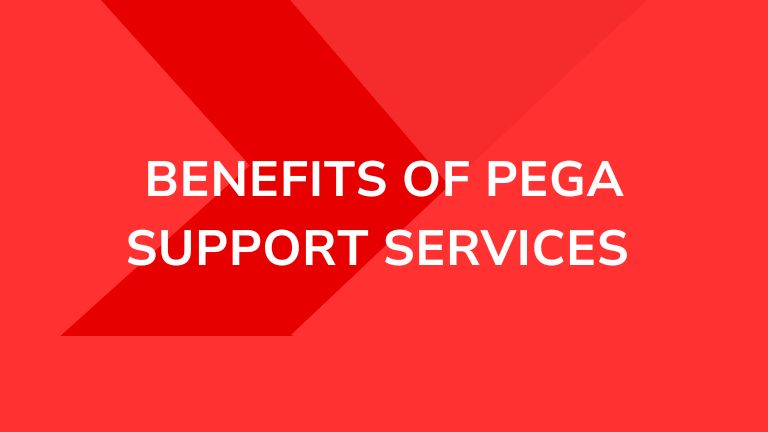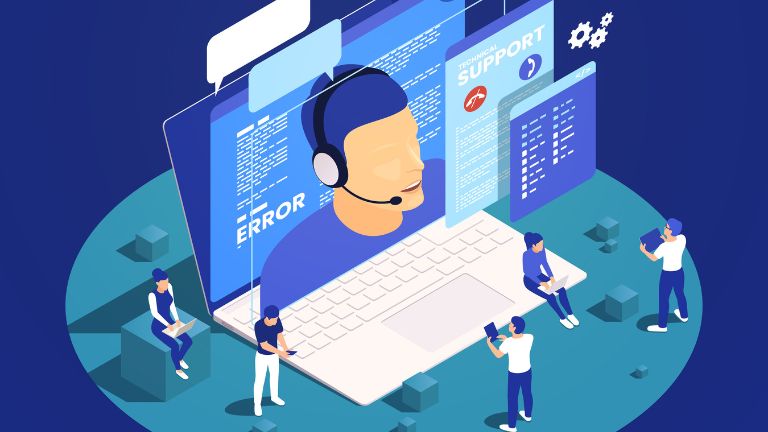
Introduction
Pega support, as the name defines it is a crucial component for the support of pega platforms. This offers complete guidance and support to the users.
With the help of Pega support, businesses are able to optimize their workflows and use Pega’s robust capabilities.
Pega support can be an indispensable resource for Pega platforms ensuring reliability and efficiency.
What is Pega Support?
Pega Support is a comprehensive support provided for Pega applications. Pega support assists the customers in optimizing and implementing the Pega applications.
It provides technical assistance, troubleshooting, and guidance for a smoother operation of the Pega application. It plays a very crucial role for organizations to achieve their business goal.
In simple terms, Pega support is a lifeline for users that provides a greater experience for Pega products.
Upgrade your Business Process with Pega Business Process Management
Types of Pega support services provided
There are different support services provided for Pega Implementation.
- Standard
- Premium
- Mission Critical
- Technical Account
- Training and Knowledge Base
Standard
Standard support is provided during business hours ensuring the Pega systems remain operational.
Premium
This is the next level of high support than the standard one. Here, the response time is faster which is suitable for business which has critical business operations.
Mission Critical
This support is designed for business organizations that require 24/7 uptime. It provides faster resolution times to minimize the downtime.
Technical Account
In this support, there will be a dedicated technical account manager who will help in providing strategic guidance and assistance to optimize the Pega deployments.
Training and Knowledge Service
The Pega support offers complete training and knowledge service for the users which helps them manage and troubleshoot the Pega systems completely.
Standard Operating Procedure for Pega Support

Email Monitoring in Pega Support
Email monitoring can provide an excellent way to improve communication, accountability, and security
There are many categories of emails i.e. Alerts, Scheduled Reports, Shift Updates, Business Issues, and chains of in-flight issues.
Email monitoring plays a crucial role in terms of the Pega Support team(work) .
A person who logs in to his shift shall scan the emails from his previous logout till his current login .
Application Health Checking and Monitoring
First and foremost, we log in to the admin studio of the Pega application to check the health of the Application (by analyzing the nodes, queues, jobs, etc.
For checking the health status of the application we are using PDC (Predictive Diagnostic Cloud) .
PDC monitors our applications at run-time and gathers performance, quality, and diagnostic data for the Pega Platform and application components.
PDC gathers, aggregates, and analyzes alerts, system health pulses, and guardrail violations generated from Pega applications to produce trending dashboards .
Using Graylog, the functionality of a Security Information and Event Management (SIEM) tool without the complexity and cost that usually come with them.
Addressing Production Issues
An email or a text message from Microsoft Teams or any other official media is supposed to be received from the business users facing the issue .
In response to the email, we would generate a ticket and address the issue stating the team is working on it.
We would check whether the issue is a platform issue or an Application related issue .
Based on the issue we will engage the respective team or engage with business users to find the core of the issue.
Sometimes we would also look for the solution in Pega Support for any similar existing if any or sometimes we would solve it instantly based on the severity.
Based on the severity of the issue we will form a bridge call and involve the teams .
In some cases, we may need to raise a Service Request(S.R) with the support team of Pega Systems.
Production Deployment in Pega Support
All the production deployments are done by the Pega Support team.
The Application Dev team will send an email stating for Production deployment with attaching a product file based on the schedule.
Based on the schedule we will create the CR and get the approvals from the business before deploying the code.
After the CR is approved we will deploy the code at the scheduled time.
We will take the DB backup, and deploy the code as per the time mentioned .
Once deployment is completed we will send a mail requesting validation to the Application dev team.
Installation of Hotfixes:
Hotfixes are zip packages of files that address issues in the Pega 7 Platform and participating Pega-supplied applications. Hotfix Manager includes both a user-interface tool and a command-line tool.
In Pega Application, (configure—system—-release—hotfix manager), first we check for the status of the installed hotfixes i.e. committed, uncommitted, and critical missing hotfixes.
In the Pega Application, we will check the hotfix manager and scan for the critical missing hotfixes.
If any critical hotfixes missing, we will raise the SR to get the hotfixes.
Once we get the hotfixes, we start installing from lower environments .
We will monitor it for one week and commit to it.
Once completed in lower environments we will install it in the production environment.
Before installing in a production environment we will ask for approval from the application owner.
Once approved, we create a CR and install the hotfixes in production.
And monitor for one week, then we will commit the hotfixes.
Addressing Business Issues
Addressing business issues is the primary task of the Pega support team.
All businesses have their own unique set of challenges that they must face. It’s how the support team identifies and addresses those problems that determine our company’s success.
There are many reasons why we should take the time to solve business challenges:
To improve efficiency and productivity.
To increase sales and revenue.
To reduce costs.
To improve customer satisfaction.
Pricing Bix extraction
Extract data from your Pega Platform application using the Business Intelligence Exchange (BIX) Extract rule.
After enabling the built-in BIX ruleset to your application, BIX extractions are made available in the Pega Platform.
Each Extract rule extracts data from a single class.
BIX extractions may be run manually from the Extract rule or automatically through the Job Scheduler rule. All extractions must occur from the same database.
We use it to extract the data from the database and send it to the business.
Conclusion
Pega support plays a significant role in the implementation of the Pege applications.
This is a valuable resource that helps to maximize the potential of the Pega applications that drive productivity and success.
For any Pega users, investing in Pega support is an indispensable decision.